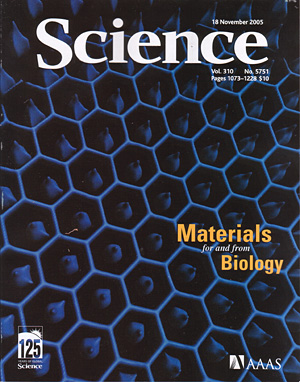Lee Lab Creates Compound Eye
April 26, 2006
Bioengineering Professor Luke Lee published the first full description of his groundbreaking artificial compound eye this week in Science.  Lee and his team created the first hemispherical, three-dimensional optical systems to integrate arrays of tiny lenses with self-aligned, self-written waveguides, or light-conducting channels. The eyes are modeled on the compound eyes of insects, and could be used as cameras or detectors to capture visual or chemical information from a wider field of vision, wider even than a fish-eye lens.
Lee and his team created the first hemispherical, three-dimensional optical systems to integrate arrays of tiny lenses with self-aligned, self-written waveguides, or light-conducting channels. The eyes are modeled on the compound eyes of insects, and could be used as cameras or detectors to capture visual or chemical information from a wider field of vision, wider even than a fish-eye lens.
The researchers found a cost-effective and easy-to-replicate method of creating pinhead-sized polymer resin domes spiked with thousands of light-guiding channels, each topped with its own lens. Packed together in a domed array, they look very much like the honeycombed eyes of insects. The end of each channel can be linked to a CCD imaging chip, just like in a digital camera, or a spectroscope for chemical analysis. Each unit is oriented as a slightly different angle, to focus in much the same way as an insect’s eye.
Other engineers had previously thought it impossible to create each unit at a different angle, but Lee and his team devised an ingenious technique to have each lens create its own waveguide, by focusing light through the lens into an soft material, ensuring that each lens and waveguide are in perfect alignment.
The technology has potential applications in cameras and sensors for use in surgery, surveillance and consumer technology.
This research is published in the April 28 issue of Science, and is attracting international media attention. Read more about this fascinating breakthrough at the UC Berkeley Media Center. Read the full article online at Science , or check out the coverage on BBC Online!

